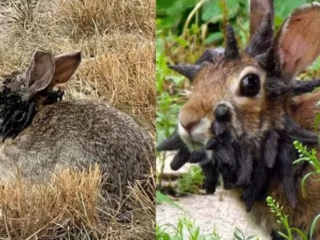New Delhi, 19 May 2025: As the world continues to grapple with the aftermath of COVID-19, scientists are raising alarms about a new viral threat quietly spreading across Latin America. A virus largely unknown outside scientific circles is rapidly spreading, sparking serious concern among epidemiologists and public health experts. Known as the Oropouche virus, this tropical pathogen has already infected over 20,000 people since late 2023. Confirmed cases have been reported in Brazil, Peru, Colombia, Bolivia, and the Caribbean — and the numbers appear to be climbing.
What Is the Oropouche Virus?
First identified in 1955 in Trinidad and Tobago, the Oropouche virus is an arbovirus — meaning it is transmitted by arthropods like mosquitoes and biting midges. It belongs to the Peribunyaviridae family and causes a febrile illness that closely resembles dengue and Zika infections. Symptoms typically include sudden onset of fever, headache, muscle and joint pain, rash, and in some cases, nausea and vomiting.
While generally considered less deadly than other tropical viruses, Oropouche virus infections can cause severe discomfort and may occasionally lead to complications such as meningitis or encephalitis, though these severe cases remain rare. The similarity in symptoms to dengue and Zika means Oropouche infections often go undiagnosed or are misclassified, contributing to its “massively under-diagnosed” status, as experts describe it.
Why Is the Virus Spreading Now?
Several factors appear to be driving the recent surge in Oropouche virus infections:
- Climate and Environmental Changes: Rising temperatures and altered rainfall patterns have expanded the habitats of the biting midges and mosquitoes that carry the virus. These vectors now thrive in areas where they previously were not common, increasing the risk of transmission.
- Urbanization and Deforestation: Rapid urban growth and deforestation in Latin America have created new ecological niches, bringing humans into closer contact with infected insects. This increases opportunities for the virus to jump from sylvatic (forest) cycles into urban populations.
- Limited Surveillance and Awareness: Until recently, Oropouche virus has largely ignored by public health systems outside affected rural zones. Limited diagnostic testing and low awareness have hampered efforts to detect and control outbreaks.
The Scale of the Current Outbreak
Since late 2023, official health reports confirm more than 20,000 cases across several countries. Including hotspots in Brazil’s Amazon region and parts of Peru, Colombia, and Bolivia. The virus has also identified in Caribbean nations, raising fears of further regional spread.
Many infected individuals experience flu-like symptoms lasting several days to a week. However, the high case numbers have put pressure on local healthcare systems, particularly in rural and under-resourced areas. Hospitalizations are relatively rare but still pose a risk. Especially to vulnerable populations such as the elderly and those with compromised immune systems.
Why Are Scientists Concerned?
Epidemiologists warn that Oropouche virus could be the “next big” tropical virus to emerge on a wider scale, with potential global implications:
- Underdiagnosis Masks True Spread: Because symptoms overlap with other common tropical illnesses. Like dengue, many cases are likely miss, meaning the real number of infections may be much higher than reported.
- Urban Transmission Potential: While Oropouche virus has traditionally circulated in sylvatic environments. Evidence suggests it is increasingly moving into urban areas. This mirrors patterns seen in other arboviruses, such as Zika and chikungunya, which exploded globally after urban adaptation.
- No Specific Treatments or Vaccines: There is currently no vaccine or antiviral therapy for Oropouche virus. Treatment is symptomatic, focused on relieving fever and pain. This makes prevention, primarily through vector control and personal protection, essential.
- Risk of Wider Spread: With global travel and trade, the infected vectors or travelers carrying the virus could introduce Oropouche to new regions, including North America and beyond. The expanding range of mosquito and midge species capable of carrying the virus adds to this risk.
What Can Be Done?
Experts recommend urgent action to prevent the Oropouche virus from becoming a larger global threat:
Enhanced Surveillance and Diagnostics: Countries in affected regions must improve testing to accurately detect Oropouche infections. Training healthcare workers to recognize the virus and differentiate it from other febrile illnesses is critical.
Vector Control Programs: Strengthening efforts to reduce mosquito and midge breeding grounds through sanitation, insecticides, and community engagement can slow virus transmission.
Public Education: Awareness campaigns to educate people about mosquito bite prevention — using repellents, nets, and eliminating standing water — are vital.
Research Investment: The scientific community needs to accelerate research into vaccines, antiviral treatments, and better diagnostic tools to tackle Oropouche virus effectively.
A Wake-Up Call Amid Other Tropical Threats
The rapid rise of Oropouche virus infections is a stark reminder that tropical viruses continue to evolve and spread, often under the radar. Similar to the Zika and dengue outbreaks that shocked the world in the past decade. Oropouche has the potential to cause widespread illness, strain healthcare systems, and disrupt communities.
As global health authorities monitor the situation closely, this outbreak underlines the importance of strengthening disease surveillance. Investing in tropical disease research, and addressing environmental factors that drive the emergence of new viral threats.
Ignoring early warning signs now could lead to another devastating epidemic or pandemic — one that might catch the world unprepared once again.








